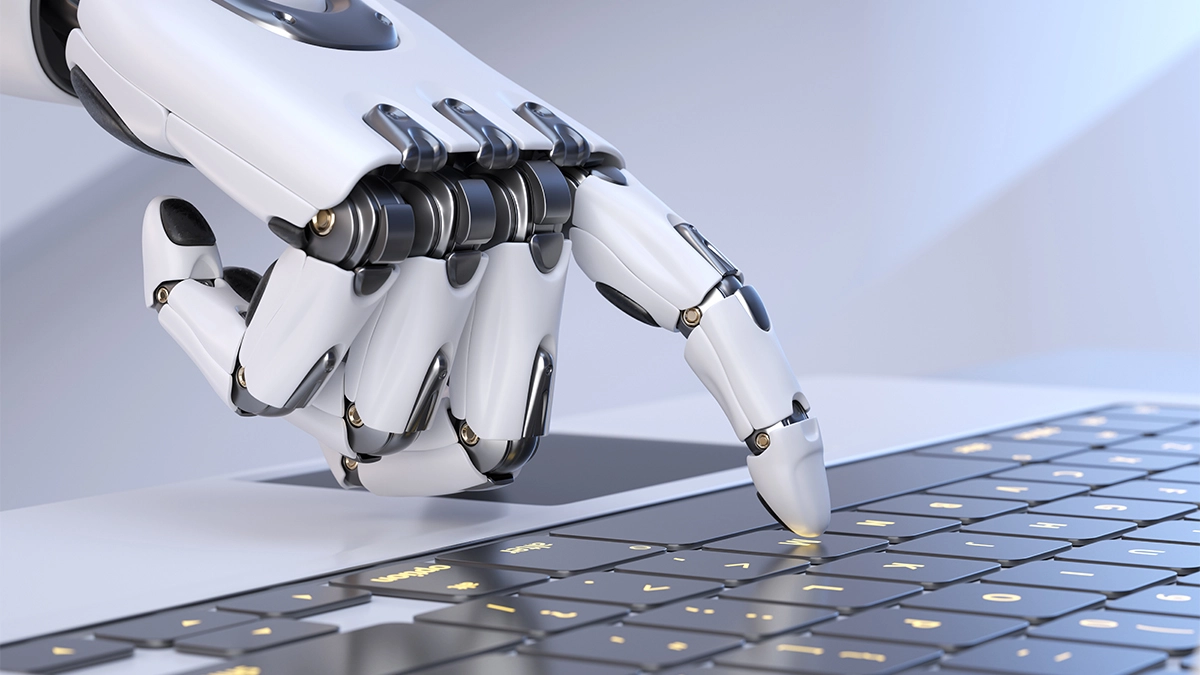Artificial intelligence has made its way into almost every area of business. From customer support chatbots to content writing assistants, AI tools promise to save time, reduce costs, and make complex tasks simple. Website building is no exception.
You’ve probably seen adverts for AI-driven website builders that claim to create a professional-looking site in minutes. For a small business or startup with limited time and budget, it can sound like the perfect solution. But before you dive in, it’s worth knowing that there are risks involved.
In this guide, we’ll break down the AI website pitfalls that can hold your business back and show you how to avoid them. That way, you can make informed decisions and ensure your website works as hard for your business as you do.
Why Small Businesses Turn to AI Website Builders
If you’re running a small business or startup, time and money are usually in short supply. Traditional web design can feel overwhelming, including choosing a platform, designing layouts, writing content, and making sure everything works on mobile. AI promises to make all of that easier.
Popular AI website builders offer:
- Quick setup with minimal technical skills.
- Templates tailored to your industry.
- Automated design suggestions.
- Content generation to fill blank pages.
On paper, it sounds ideal. But the reality often falls short, especially if your goal is to create a site that builds trust, ranks on Google, and generates leads.
Pros vs Cons of Using AI Website Builders
| Pros | Cons |
|---|---|
| Quick and simple setup | Limited customisation compared to a bespoke site |
| Lower cost than hiring a web developer | Your site may look similar to others using the same templates |
| No need for technical knowledge | Some AI-generated content may feel generic |
| Built-in templates that look professional | Advanced features may require upgrading to higher-priced plans |
| AI support for content and design decisions | Long-term flexibility can be restricted compared to custom development |
List of Top AI Website Builders
- Wix ADI
https://www.wix.com/lp-en/ai - Squarespace with AI
https://www.squarespace.com - Hostinger Website Builder
https://www.hostinger.com/uk/horizons - Shopify with AI
https://www.shopify.com/uk/website/builder - 10Web
https://10web.io - Durable
https://durable.co
Pitfall 1: Generic Design That Fails to Stand Out
One of the biggest AI website pitfalls is the lack of originality. AI-driven platforms often rely on pre-designed templates and automated choices. The result is a site that looks like hundreds of others.
For a small business, your website is one of the first chances to make an impression. If it looks generic, visitors may assume your business is the same. Worse, if your competitors are using the same builder, your websites could end up looking nearly identical.
How to avoid this:
- Treat AI templates as a starting point, not a finished product.
- Invest in some level of customisation, whether through a designer or by learning how to tweak layouts, fonts, and colours.
- Make sure your website reflects your brand personality, not just what the AI suggests.
Pitfall 2: Poor SEO Performance
A beautiful website is useless if no one finds it. Unfortunately, many AI website builders are not built with search engine optimisation (SEO) in mind.
Common issues include:
- Bloated code that slows down your site.
- Lack of proper heading structures.
- Weak metadata (titles, descriptions, alt text).
- Limited control over URL structure.
Since SEO is one of the best ways to drive consistent, free traffic to your site, overlooking it can cost your business dearly.
How to avoid this:
- Choose a platform that gives you control over SEO basics (meta titles, descriptions, headings, alt tags, etc.).
- Use tools like Google PageSpeed Insights to check performance.
- Consider investing in an SEO audit or support from an expert who can fine-tune your AI-generated site.
Pitfall 3: Content That Misses the Mark
AI content generators are everywhere, and while they can churn out text quickly, the quality isn’t always there. You may end up with content that:
- Sounds robotic or unnatural.
- Repeats itself or uses filler phrases.
- Lacks accuracy about your products or services.
- Doesn’t align with your brand’s tone of voice.
For startups and small businesses, your content is one of the most powerful tools you have. It explains what you do, builds trust, and convinces visitors to take action. If it feels flat or generic, people won’t connect with your business.
How to avoid this:
- Use AI for drafting ideas, but always review and edit content yourself.
- Inject personal stories, examples, and insights that AI can’t replicate.
- Keep your target customer in mind and write in a tone that feels approachable and human.
Pitfall 4: Limited Scalability
At first, an AI-built site may meet your needs. But as your business grows, you’ll want to add new features, like booking systems, online payments, or membership areas. Many AI website builders simply don’t scale well.
You may find yourself locked into a platform with limited integrations or discover that moving your site elsewhere is complicated and costly.
How to avoid this:
- Think ahead about what your business might need in the next 2–3 years.
- Check whether your chosen platform allows integrations with third-party tools.
- If growth is a big part of your plan, consider starting with a more flexible platform like WordPress, which can grow alongside your business.
Pitfall 5: Weak User Experience

AI doesn’t understand your customers the way you do. While it can assemble a layout, it often fails to consider the finer details of user experience (UX).
Examples include:
- Confusing navigation menus.
- Poor mobile responsiveness.
- Overloaded homepages with too much information.
- Missing accessibility features (like alt text or readable contrast).
A poor user experience can lead to high bounce rates, lost leads, and frustrated customers.
How to avoid this:
- Test your website from the perspective of your target customer.
- Ask friends or colleagues to try navigating the site and give feedback.
- Use analytics tools to track where users drop off and adjust accordingly.
Pitfall 6: Security Risks
Cybersecurity is an area many small businesses overlook, but it’s crucial. AI website builders are often hosted on shared platforms, which means if one site is compromised, others can be at risk.
You may also find limited options for adding SSL certificates, backups, or two-factor authentication. For businesses handling customer data, this can create serious legal and reputational problems.
How to avoid this:
- Make sure your chosen platform includes SSL as standard.
- Look for platforms with strong security reputations.
- Regularly back up your site, even if you need to use an external tool.
Pitfall 7: Over-Reliance on AI
Perhaps the biggest risk is putting too much trust in AI. Building a website isn’t just about having something online; it’s about creating a digital presence that represents your brand, communicates with your audience, and drives business growth.
AI can help, but it can’t fully replace human judgment, creativity, or strategy. If you rely solely on AI, you may end up with a site that looks fine on the surface but doesn’t perform where it counts.
How to avoid this:
- Treat AI as a tool, not a replacement for strategy.
- Focus on your customer journey and business goals first, then use AI to support them.
- Don’t be afraid to seek professional help for areas that matter most, like branding, SEO, and UX.
When AI Can Be Helpful
Despite these AI website pitfalls, there are times when AI tools can be useful:
- Generating initial design ideas.
- Drafting blog posts or social media captions.
- Automating repetitive tasks, like resizing images.
- Offering inspiration when you’re stuck for content.
The key is to combine AI with human insight. Think of it as having an assistant that speeds up tasks but still requires your input to get things right.
The Smarter Approach for Small Businesses
If you’re just starting out, it’s tempting to grab the quickest, cheapest solution. But your website is more than a digital business card; it’s the foundation of your online presence.
A better approach is to:
- Define your goals (leads, sales, awareness).
- Decide on the features you’ll need in the short and long term.
- Use AI tools for support, but not as the entire solution.
- Work with professionals when it comes to strategy, branding, and SEO.
This balanced approach ensures you avoid the common AI website pitfalls while still making the most of what the technology can offer.
Final Thoughts
AI has the potential to make website building faster and easier, but it’s not a silver bullet. The biggest AI website pitfalls—generic design, poor SEO, limited scalability, weak content, and security risks—can hurt your business if you don’t plan ahead.
Small businesses and startups succeed when they combine the efficiency of AI with the creativity and strategy of human input. By knowing the risks and taking steps to avoid them, you’ll end up with a website that doesn’t just exist—it delivers real results.
Ready to build a website that stands out? At 404 Marketing, we help small businesses create websites that are not only professional but also optimised for growth. Get in touch with us today to see how we can help you avoid the pitfalls and create something that works for your business.


